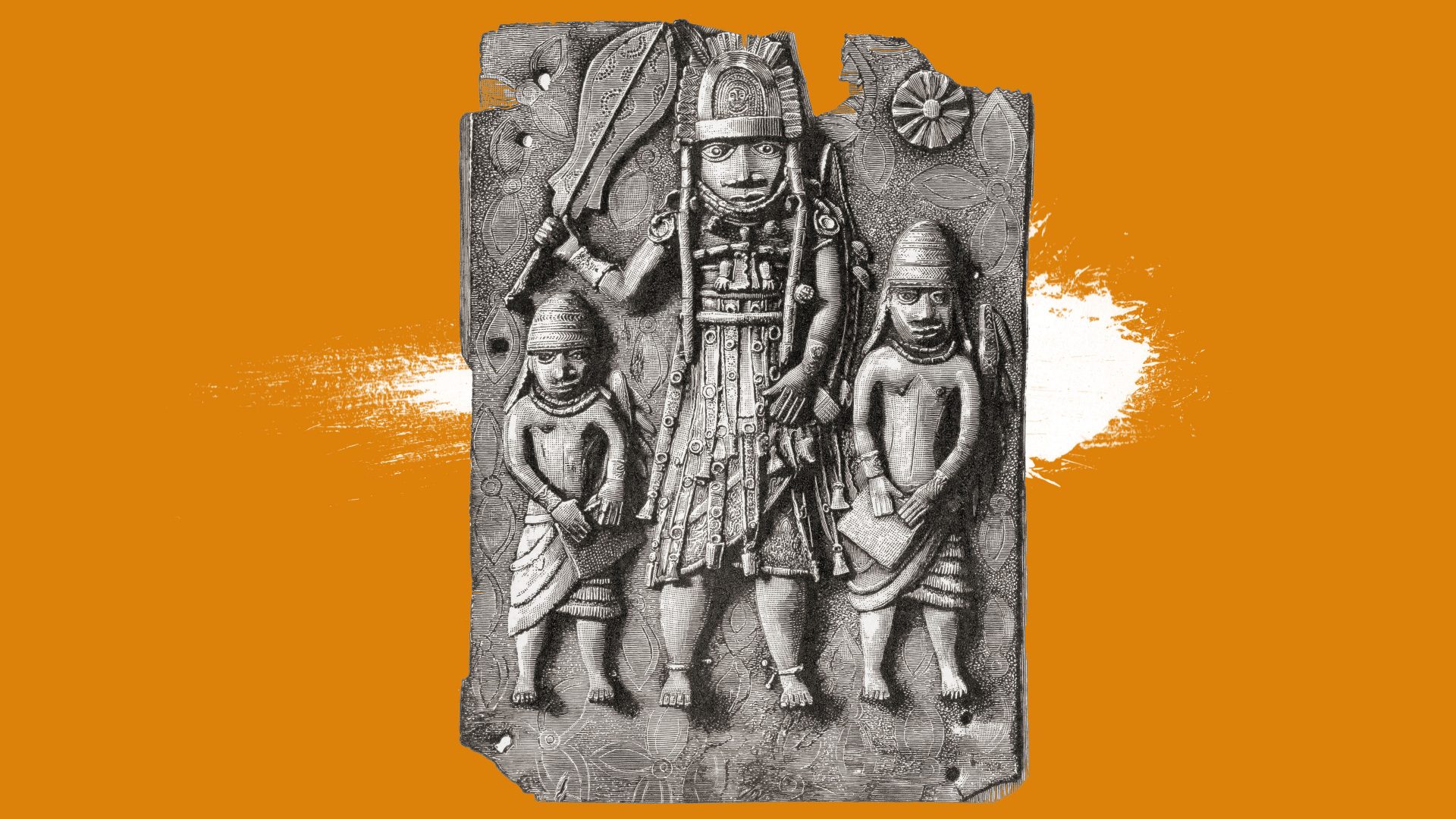The Horniman Museum in London has announced that it is returning 72 Benin Bronzes to Nigeria, a move its chair is calling “moral and appropriate”. Oxford and Cambridge Universities are both looking to repatriate their own Bronzes too.
The Benin Bronzes are metal plaques and figures made from the 1300s onwards (many are actually made of brass). They were mostly looted from the royal palace in Benin by a 1200- strong British force sent there in 1897 on a revenge mission in response to an earlier attack on a British expedition there. This booty was then sold off, partly to cover expenses. Over a thousand such objects were dispersed across the world, most of them ending up in museums and private collections around Europe and the US.
This pillaged art with a violent provenance is of very high quality and workmanship. The Nigerian government is, understandably, keen for its return to Nigeria. The case for restitution is made easier because objects were taken by force rather than exchanged or given as gifts. Nevertheless, this has been a long time coming. Oxford and Cambridge are behind the mainstream – museums around the world have already returned many bronzes to Benin. The French Quai Branly Museum returned 26 similar pieces last year and President Macron described this as a “fair restitution” of looted pieces.
“Returned” might not be quite the right word here, though. Nigeria didn’t exist as a country when these works were created in the way it does today. This raises philosophical problems. To play devil’s advocate, if the country didn’t exist, does present-day Nigeria have an overriding claim on these objects? We know they were illegally acquired and that their looting was part of the sordid history of colonialism in Africa, but does it follow that the country that occupies the geographical position of Benin is automatically the right place for them?
A simple answer is that such works are in a sense site-specific. Their strongest links are still to their place of origin and to descendants of the people who made them. They also have immense symbolic value for those living in Nigeria today who rightly feel their cultural patrimony was stolen by colonialists.
One classic argument against the repatriation of objects to their places of origin is that if we start, we’ll never stop. This is the so-called floodgates argument. Open the gates and there will be a deluge of objects sent back.
This metaphor has rhetorical force because of the image it conjures up. The gates open and the head of water forces them open further. At that point, it is simply impossible to close the gates. Allegedly.
On this view, once you start handing things back there will soon be no Egyptian mummies outside Egypt, no Italian paintings outside Italy, and no Greek antiquities outside Greece. Today’s museums will be emptied. But open floodgates are not a good metaphor. If museums address these issues on their merits case by case, they won’t need to submit to an overwhelming force.
There are better arguments for repatriating some objects than for others. Factors such as how well the host country can look after the pieces, the significance of the particular works, and issues about how they came to be in a European museum, can all play a part in the decision-making. It depends why museum trustees decide to repatriate them and whether they are prepared to draw a line somewhere. The default principle here should not be “give absolutely everything back”, but “weigh up the arguments”.
The question then remains how to determine whether repatriation of an object is the right course of action. The obvious cases are where its acquisition was illegal. Then it’s just a question of law and returning stolen objects to their rightful owners. Moral cases are usually more complex than that, and several different factors can come into play.
Even when the objects were legally acquired there may have been considerable pressure on the seller, or even some kind of deception involved. So questions of rightful ownership may not be straightforward. Beyond that, for some countries, particular pieces have such overwhelming iconic significance that many believe these should override other factors. Think of the Parthenon sculptures. Even if it could be proved that Lord Elgin took them legally, there would still be a strong case for their return.
The flow of Benin Bronzes from European museums to Nigeria should have destroyed floodgate arguments once and for all. No gates have suddenly opened, and no unstoppable pressure is leaving museums bare. Museum trustees can still judge each case by adjudicating competing claims. The rest is rhetoric.



